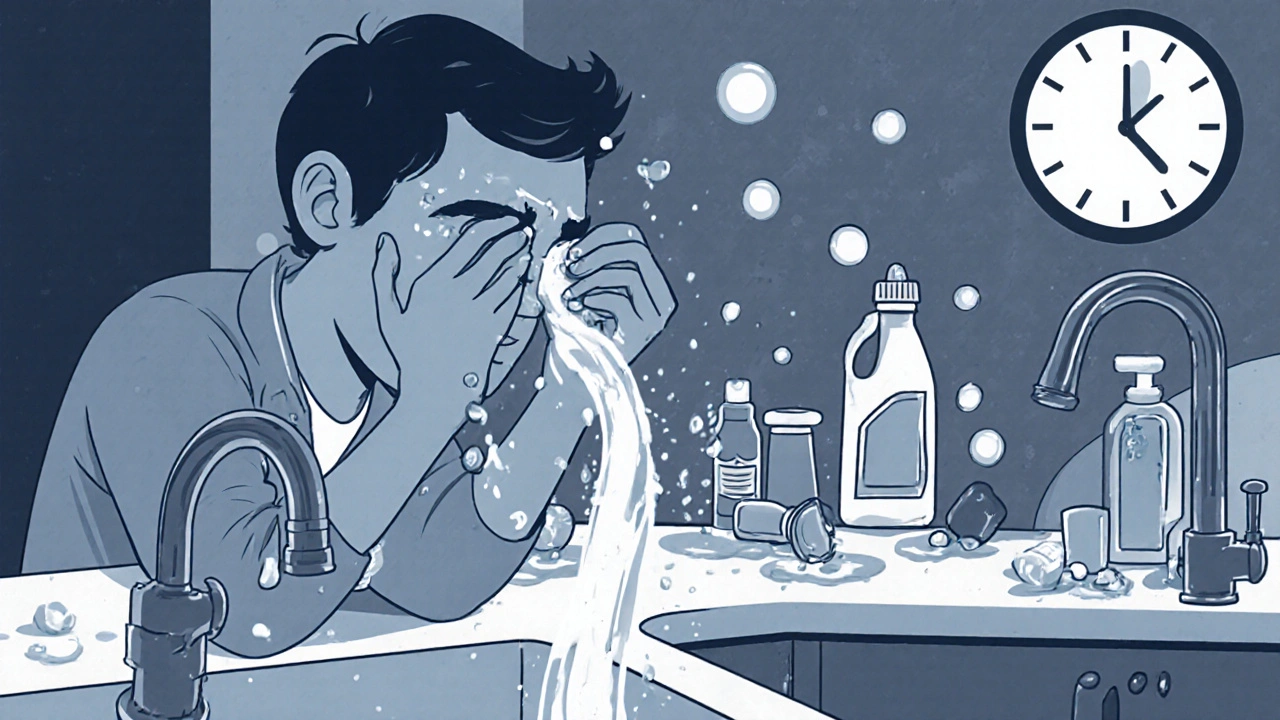When something gets in your eye—whether it’s cleaning fluid, pool chlorine, sawdust, or even just a stray eyelash—your first reaction might be to rub it. That’s the worst thing you can do. First aid for eye splash, the immediate steps taken after a foreign substance enters the eye. Also known as emergency eye care, it’s not about hoping it’ll go away. It’s about acting fast to prevent lasting damage. Your eye is delicate. A simple splash can lead to corneal scratches, chemical burns, or even vision loss if you wait too long or do the wrong thing.
Chemical eye exposure, when irritants like acids, alkalis, or solvents contact the eye, is especially dangerous. Alkali substances like drain cleaner or ammonia can keep burning for hours if not washed out immediately. Eye flush, the process of rinsing the eye with clean water or saline is the #1 action that saves sight. Don’t use eye drops unless they’re labeled for emergency rinsing. Tap water is better than nothing—run it gently over the eye for at least 15 minutes. Tilt your head so the affected eye is down, so the stuff doesn’t flow into your other eye. Hold your eyelid open if you can. If you’re helping someone else, don’t delay. Time is vision.
Many people think they should bandage the eye or use home remedies like milk or tea. Don’t. These can trap chemicals or introduce bacteria. Also, never try to remove a stuck object yourself—like metal shavings or glass. That’s when you call 911 or head to the ER. Even if the pain fades after rinsing, you still need an exam. Some injuries don’t hurt right away but can destroy your eye slowly.
Eye injury, any damage to the eye from physical or chemical trauma is more common than you think. Kids get hit with toy arrows. Workers get splashed during cleaning. Gardeners get hit with branches. And it’s not just chemicals—sand, dirt, makeup, even a strong gust of wind can carry something harmful. The key is knowing the steps before it happens. Keep a clean water bottle or saline solution in your toolbox, car, or first aid kit. Practice the rinse technique so it’s automatic when panic hits.
You’ll find real stories and clear guides below—how to handle a bleach splash, what to do after a paintball hit, why flushing with bottled water beats rubbing your eye, and when a trip to the doctor is non-negotiable. These aren’t theories. They’re what worked for people who had to act fast. No fluff. Just what you need to know before your next accident.

Chemical splashes in the eye require immediate, continuous flushing with water for at least 20 minutes. Acting fast can save your vision-delaying even a few minutes increases the risk of permanent damage. Know the right steps to take before help arrives.